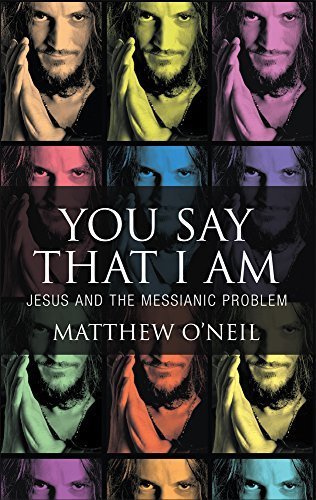Hemant Mehta's Blog, page 1923
September 18, 2014
Friendly Atheist Podcast Episode 18: TAM2014: Emcee George Hrab and Psychologist Sheldon Helms
Our latest podcast guests are The Amazing Meeting emcee George Hrab and psychologist Sheldon Helms.
Jessica sat down with them to talk about their reflections on the conference and the importance of communication in the science world.
We’d love to hear your thoughts on the podcast. If you have any suggestions for people we should chat with, please leave them in the comments, too.
You can subscribe to the podcast on iTunes, get the MP3 directly, check it out on Stitcher, or just listen to the whole thing below.
And if you like what you’re hearing, please consider supporting this site on Patreon and leaving us a positive rating!
Secular Coalition for America Begins Releasing 2014 Midterm Election Report Cards
The Secular Coalition for America is releasing Congressional report cards in advance of the upcoming midterm elections. They’re going alphabetically state-by-state and there are a hell of a lot of Fs floating around:
That’s for Sen. Jeff Sessions, but he’s not the only candidate receive failing grades down the line.
Rep. Trent Franks (R-AZ), Rep. Doug La Malfa (R-CA), Rep. Jeff Miller (R-FL), Rep. Lynn Westmoreland (R-GA), Rep. Steve King (R-IA), Rep. Peter Roskam (R-IL), Rep. Rodney Davis (R-IL), Rep. Randy Hultgren (R-IL), and Illinois Senate candidate Jim Oberweis (R) don’t have a single passing grade on theirs, either.
And we’re only through the first quarter of states.
Then again, knowing these candidates, we’ll soon see these report cards posted on their Facebook pages as if they were badges of honor.
The rest of the report cards will be released over the next two weeks. Obviously, not every district is covered. The SCA is only focusing on the 50 House districts that did the worst on last year’s report card and 7 competitive Senate races.
The grades were assigned based on candidates’ statements regarding their stances on public funding for religious schools, public funding for faith-based initiatives, religion-based discrimination, abstinence-only sex education, and embryonic stem cell research.
Jesus Didn’t Walk on Water
Was Jesus really who he said he was? Were his miracles real?
Theologian Matthew O’Neil has written a new book that explores and dissects the divinity of Jesus. It’s called You Say That I Am: Jesus and the Messianic Problem (Dangerous Little Books, 2014):
In the excerpt below, O’Neil talks about the story of Jesus walking on water (Footnotes are omitted):
The story in Mark 6:45-52, Matthew 14:22-33, and John 6:16-21, shows the disciples in a boat in the middle of the sea of Galilee while Jesus remains behind to pray. While the disciples are at sea, an “adverse wind” takes over and the disciples struggle to keep the boat stable. Suddenly, the disciples see Jesus walking on the water towards them. In Matthew’s account, Peter gets out of the boat, starts to walk towards him, but becomes fearful and falls into the water. Otherwise, Jesus tells the disciples not to be afraid, and they became reassured and the storm was calmed.
So how can we explain this story? Is there a natural explanation? For example, Albert Schweitzer and others have argued that the storm inhibited the vision of the disciples and they were actually closer to the shore. But then, how did the storm suddenly calm once Jesus boarded the boat? Perhaps Jesus was actually walking on large rocks, just below the water. Or, perhaps, there is a supernatural element to the history of Jesus, and this is just a retelling of a strange, but amazing story of the miraculous ministry of Jesus.
Actually, it is neither a natural, or supernatural, story. It is, as German theologian David Friedrich Strauss wrote in his two-volume book The Life of Jesus Critically Examined (Das Leben Jesu kritisch bearbeitet), myth. Not “myth” as in complete fiction, but, similar to the story of Jesus’ resurrection, parable with the intent of conveying a deeper meaning, or lesson. It is a history-like story trying to convey some truth. It is, in other words, allegorical.
In ancient cultures and religions, and very much so in Christianity, it was common to liken tough times to stormy seas that were life-threatening This can be seen in instances of the Dioscuri, who delivered shipmen from stormy seas, as seen in the Homeric Hymns. Or even with Archilochus or Alcaeus comparing the troubles of tyranny to stormy seas. The purpose was to show that one, and only one, could rise above the trials and tribulations of life. That person was Jesus of Nazareth, and if others would follow him, they, too, would rise above all the issues that faced the people of that time.
…
It is easy to explain away that ability of Jesus to perform the miracles attributed to him, because he is the Messiah; God’s son, the Son of Man, the Christ. However, what a fascinating story the gospel accounts become looking at them from the perspective of the writers and from understanding early literary forms and how they were used in the texts of the New Testament. By understanding how such devices were used, we can peel away all those layers of theology and myth, to discover more about the historical Jesus.
Instead of a person who performed supernatural deeds, we see a person who broke down societal norms and attempted to end the honor-shame balance. However, we also become aware of the prevalence of supposed supernatural powers during antiquity and how common it was to have people in stories, such as Jesus, perform miracles. With that idea in mind, Jesus becomes just another figure that became a hero through story-telling; the real person having been obscured by all the mythology and legend that grew in prominence as his story was told and re-told. Jesus performed miracles in similar (although often better) manner to the miracles from older stories in Hebrew scripture, such as those performed by Elijah and Elisha. What is important, is to understand that it was not, at that time, unusual for the performance of miracles to be included in such stories.
A Messiah, a miracle worker, Jesus was not. But he was, most certainly, a powerful figure who brought great hope to many and inspired some incredible stories, through the telling and re-telling of which, mythology and legend was created that ensured the survival of his legacy for two-thousand years (so far).
You Say That I Am: Jesus and the Messianic Problem is now available online.
Ken Ham is Writing a Tell-All Book About His Debate with Bill Nye
Ken Ham still thinks we’re all talking about his debate with Bill Nye.
Seriously. He thinks we’re all rethinking evolution because of stuff he said.
And he’s finally getting around to writing a tell-all book that will impress nobody.
I can’t believe he didn’t call it I Was There… (Edit: Okay, you all win. It should have been called There’s Another Book…)
#MissedOpportunity
Popular AiG speaker and author Bodie Hodge (my son-in-law) and I have written what we believe is a unique and powerful book about the debate — not just dealing with the content of the debaters, but detailing behind the scenes and personal information. We believe this publication (estimated to be well over 300 pages), will be a phenomenal teaching tool, and will be a fascinating read for what has been called by some as “the debate of the century.”
No scientist is calling it the “debate of the century.” Only you are calling it that. Maybe other Creationists. No one else.
And 300 pages?! What the hell happened behind the scenes that needs more than a few pages, tops, to explain? Bill Nye already wrote an article from his perspective (and gave a speech, too) and it wasn’t anywhere close to that length.
But really, what’s in the book?
Many people have lingering questions from the debate and are curious about how, if given more time than I had during the debate, I would have countered Mr. Nye’s claims. This new resource does just that. I encourage everyone who viewed the debate — believer or skeptic alike — to get a hold of this resource. Believers will be equipped to stand firmly on the authority of God’s Word and respectfully dialogue with others. Skeptics will be challenged with the truth of God’s Word, the bankruptcy of evolution and naturalism, and the abundance of scientific evidence for the biblical model of origins.
Okay. So this book is just a copy-paste version of all of his other books… and he’ll get a do-over on all the embarrassing answers he gave during the debate.. even though there’s no new information on his end. (Ken, time wasn’t the problem. Your answers were.)
Arguably, the most memorable moment of the debate was when Nye and Ham were asked what, if anything, would ever change their mind:
Ken Ham essentially said Nothing.
Bill Nye said “One piece of evidence.”
Can’t wait to hear how Ham tries to make up for that…
Mikey Weinstein Responds to Pat Robertson Calling Him “One Little Jewish Radical” who is “Terrorizing” the Air Force
I know Pat Robertson saying something crazy isn’t news to anybody, but now that the Air Force is allowing atheists to omit the words “So Help Me God” from the oath, he is flipping out over how quickly they changed this policy.
He’s especially angry with Mikey Weinstein of the Military Religious Freedom Foundation for writing a letter to the Secretary of Defense defending atheists. (For what it’s worth, there’s no evidence that Weinstein’s letter was the one that caused the Air Force to change its policy, but it undoubtedly helped.)
There is a left-wing radical named Mikey Weinstein who has got a group about ‘people against religion’ or whatever he calls it, and he has just terrorized the Armed Forces. You think you’re supposed to be tough, you’re supposed to defend us, and you’ve got one little Jewish radical who is scaring the pants off of you.
You want these guys flying airplanes to defend us when you’ve got one little guy terrorizing them? That’s what it amounts to. You know, we swear oaths, ‘So help me God,’ what does it mean? It mean’s that with God’s help — You don’t have to say you believe in God, you just have to say you want some help beside myself with the oath I’m taking. It’s just crazy. What is wrong with the Air Force? How can they fly the bombers to defend us if they cave to one little guy?
Well, first of all, it wasn’t just “one little guy.” It was Weinstein, and the American Humanist Association, and the Military Association of Atheists and Freethinkers, and a lawyer for the conservative American Family Association, and right-winger Gordon Klingenschmitt who almost never says anything sensible.
And what’s with Robertson saying, “You don’t have to say you believe in God”? Signing the oath is admitting exactly that! Remember: All the other branches of the Armed Forces made “So Help Me God” optional a long time ago. The Air Force is only now falling in line with them. So why isn’t Robertson complaining about the other branches?
The Air Force agreeing that service members’ religious beliefs shouldn’t preclude them from enlisting isn’t “caving in.” It’s making us stronger. It’s what they should have been doing all along.
I called up Weinstein to see if he had anything to say in response to Robertson — as if he ever didn’t have something to say — and he was even more blunt than usual:
“Pat Robertson is to human dignity and sanity and integrity and character what dog shit is to a fine French restaurant on the menu.”
Unquote. I’ve had many phone conversations with Weinstein over the years, but never one that quick. He knew exactly what he wanted to say.
(via Right Wing Watch)
Exploring Awe as the Source of the Sacred
The conversation about how human beings derive meaning from life, and how it ties into atheism and religion, continues on NPR’s 13.7 Cosmos & Culture blog.
On Monday, I covered Alva Noë‘s take on what he sees as “Spockian Atheism,” a godless view of life that leaves no room for value or meaning (and somehow I missed the opportunity to note, “Dammit Jim, I’m an atheist, not a robot!” The shame of it…).
Now, Adam Frank has added his own take to the dialogue, with a piece called, “Is Atheist Awe A Religious Experience?”
He proposes that
What makes the elemental human experience of awe significant is it is, first and foremost, an experience of meaning. It saturates the world with meaning. Explanations for the origins of that meaning must always come later.
Awe is “pre-scientific and pre-religious,” he contends. That is, from the perspective of human experience, “[i]t comes before we opt for explanations of any kind…” To Frank, this is where the idea of sacredness is rooted: not in specific religions, but in the “eruption of awe into our everyday lives.”
It’s an interesting piece and certainly worth reading if you get the chance.
(Image via Shutterstock)
What’s the Use of Praying?
My friend Benjamin Corey, a fellow Patheos blogger and Christian author, recently wrote that
[P]rayer is often the most effective tool a Christian has.
Effective? He’ll be visiting in a couple of weeks, and I intend to ask him, over beers, what that means. I don’t doubt that prayer can be a means of quieting or soothing your mind, like meditation. In that sense, it’s perfectly benign, even positive. (Evidently, prayer can mean many things to many people, as this fairly insipid advice from Andrew W.K. shows. Hemant wrote a very good response to it here.)
But what Corey seems to be talking about is intercessory prayer. You ask God for stuff (material or not), and if He feels like it, He’ll give it to you. Neat. I’d be a Christian too if there really was a Great Invisible Wish-Granter who, if I asked Him really nicely, could bring my parents back to life, or at least return a lost sock to me.
The efficacy of intercessory prayer is a cornerstone of Christianity; but as with almost anything else in that religion, you shouldn’t examine the premise too closely and critically … unless you’re prepared to have your faith shaken.
Eight years ago, a team led by Dr. Herbert Benson, a prominent cardiologist and researcher, published what looks to be the definitive study of intercessory prayer. The New York Times noted that
One reason the study was so widely anticipated was that it was led by Dr. Benson, who in his work has emphasized the soothing power of personal prayer and meditation. … Most of the money [for the study] came from the John Templeton Foundation, which supports research into spirituality.
Long awaited, the decade-long study concluded that intercessory prayer produced no measurable results — but if it did, the data implied, the effect was a negative one.
The large-scale experiment was pretty straightforward. The researchers asked religious people from three U.S. congregations to pray (by name) for more than 1,800 coronary-bypass patients.
The patients were broken into three groups. Two were prayed for; the third was not. Half the patients who received the prayers were told that they were being prayed for; half were told that they might or might not receive prayers. …
Analyzing complications in the 30 days after the operations, the researchers found no differences between those patients who were prayed for and those who were not.
In another of the study’s findings, a significantly higher number of the patients who knew that they were being prayed for — 59 percent — suffered complications, compared with 51 percent of those who were uncertain. The authors left open the possibility that this was a chance finding. But they said that being aware of the strangers’ prayers also may have caused some of the patients a kind of performance anxiety.
“It may have made them uncertain, wondering am I so sick they had to call in their prayer team?” Dr. Bethea [a co-author of the study] said.
In a rational world, that ought to probably have been the end of it, but the world isn’t a rational place by any stretch. For instance, one of Corey’s commenters writes that s/he knows, with great certainty, that intercessory prayer works, no steenking studies needed.
I know for a fact that my sister, who is a devout Catholic, has had prayers answered many times. For example, when her daughter was pregnant with her 8th baby and had several serious complications in her pregnancy, and my sister had been praying for her daughter, the problems disappeared without doctors having to intervene. When my sister needed to find a home for a dog, she prayed to St. Francis of Assissi, and a relative called to say she wanted a dog. When her son wanted to attend a specific college in another state, but his grades were poor and he had very little chance of being accepted, she did 12 (!) novenas (prayed to 12 different saints, for 9 days). On the last day, the college called her to say that they had decided to accept her son.
Sampling error, anyone?
Wow — God got this person’s low-performing nephew into the college of his choice! That’s so amazing! I suppose He was so busy helping undermotivated students get degrees that he couldn’t or didn’t lift a finger for parents who prayed tearfully for their leukemia-stricken child to be cured. And He let her die.
The Almighty also granted the prayer about an unwanted dog needing a new home, and still had time in His day to kill a few thousand ardent believers, despite their fervent prayers, in an earthquake or a tsunami. Praise God!
Anecdotal evidence is fine as far as it goes, but it means nothing if it isn’t confirmed by proper data, scientifically collected and interpreted, from very large samples of people, with a peer-review mechanism in place. Those studies have been done, and the most rigorous ones say that intercessory prayer produces no (or negative) results.
There are two positive outcomes of prayer that I can see. One is, as mentioned, that prayer can put you in a contemplative, even meditative mindset. (So can gazing at the stars, taking a warm bath, daydreaming, and yoga.) That’s the inward effect. It’s possible that there’s also an outward effect: people who have inner peace and calm, attained through prayer, may well radiate some of that calm, potentially infecting/influencing others by lowering situational stress or aggression.
But there are also negative effects of prayer, and they go well beyond what Benson, Bethea et al found. There’s the lost time spent on one’s knees, rather than being productive and actively trying to bring about the wished-for results. There’s also the regrettable inclination of way too many Christians to not only do their praying so that others may see their religious observance (contrary to what the Good Book instructs), but also to insist that public prayer ought to be injected in situations where it constitutionally has no business.
I don’t find it to be true that atheists are hostile to prayer. Most of us don’t care if you talk to God. If you say it helps you, we’ll shrug and go about our business; no harm, no foul. But if you insist that prayer is effective, you’re going to have to show us how; and if you foist prayer upon us in schools, in council meetings, et cetera, we’ll be glad to tell you that we’re on to you, and that your efforts to tear down the Establishment Clause really don’t have a prayer.
(Image via Atheist Meme Base)
September 17, 2014
We’re Still Waiting for the Sequel, God
Who knew God was just imitating J.D. Salinger?
Hailed by critics as one of the most important authors in recent millennia, the eccentric divinity is said to have long ago retreated from the public eye, eschewing a life of celebrity for one of solitude and quiet. To this day, experts confirmed, His artistic reputation rests exclusively upon His bestselling and highly acclaimed first work, the Bible.
At this rate, George R. R. Martin will finish writing all the Song of Ice and Fire books before God ever gets around to His next one.
(via The Onion. Thanks to Richard for the link)
Indian Politician Claims Massive Flood Damage Was Caused by People Shitting Near a Sacred Shrine
Last year, the Indian state of Uttarakhand was hit was a multi-day downpour. Thousands of people died in the ensuing flood and thousands of villages had to deal with the subsequent damage.
What caused all the destruction?
According to environmentalists, the rain alone didn’t do it:
Souparno Banerjee of the Indian advocacy group the Center for Science and Environment said that despite state government denials, most experts were of the view that unregulated development and unregulated tourism is responsible for the scale of the disaster.
“Development is important but we need to keep in mind the very delicate eco-system that you’re working within,” he said. “The Himalayas are the biggest mountain range in the world but they are also extremely fragile.
“You need to keep that in mind when putting disaster management plans in place.”
He said his organization recommended a certain amount of flow necessary to keep rivers in the region at a safe level, but that dam projects and river diversions for roads had backed up with flood waters from torrential rains.
None of that, however, matters to Uma Bharti. She knows what really caused the problems: Visiting atheists and pieces of shit near sacred spaces:
Her observations came during an interaction with experts… of the Dehradun-based Himalayan Institute of Glaciology and Forest Research Institute. Pointing out that human excretory activities were forbidden within the natural boundary formed by the Mandakini and Saraswati rivers which flowed near the shrine in 1882, Bharti said, “However, as time passed, atheists came here, mainly for business purposes. This resulted in nature’s fury at Kedarnath in 2013”.
…
She, however, added that the “immediate reason” for the Kedarnath deluge was cloudburst and excessive rains in the state which had left over 6,000 people dead. “But the underlying reason was human excretion,” she added.
Even the reporter writing this story couldn’t cover it objectively, writing in the very next paragraph:
Bharti’s comments — which apparently defied scientific logic — came a few days after…
Hilarious. And completely wrong.
At least she’s not in charge of anything important, right?
She’s only the “Minister for Water Resources, River Development and Ganga Rejuvenation” for the Indian government.
I guess we have nothing to worry about.
(Image via AJP / Shutterstock.com. Thanks to Brian for the link)
Wannabe Jihadis Crave Some of That Beheading-Video Glamour; ISIS Said to Have Signed Up Recruits in Droves
Who knew? Terrorist snuff movies are a great recruiting tool, because previously lukewarm young Islamists go gaga over them. That’s according to the International Centre for the Study of Radicalisation (ICSR) at King’s College London, reports the Guardian.
Barbarous online films, such as the two-and-a half-minute video showing the killing of British aid worker David Haines released on Saturday night, are “turning on” jihadists in countries such as Tunisia and Libya who had previously reacted coolly to the civil war between the Sunni fundamentalists of Isis and the Shia minorities in Syria and Iraq.
Evidence from the Twitter, Facebook, Ask.fm and Instagram accounts of 450 foreign fighters in Syria and Iraq and others who follow them suggests the filmed murders and speeches attacking Washington and London appear to have made Isis’s cause more glamorous to extremists abroad…
The response may explain why ISIS fighters have released the videos and have threatened to kill another Briton, Alan Henning. Some analysts have asked why Isis leaders would invite stronger military intervention from the west, but postings on social networks used by jihadis suggest the tactic could be aimed at widening support for ISIS.
Commented Peter Neumann, director of the ICSR:
People in Tunisia and Libya are particularly interested in the prospect of fighting American and now British enemies. This is turning on people who were radicalised before this conflict started but weren’t particularly excited by the Sunni-Shia battle.
Neumann adds that, among Islamic youth in Tunesia and Lybia, a not-atypical reaction to the beheadings is “pure jubilation.”
Hemant Mehta's Blog
- Hemant Mehta's profile
- 38 followers













